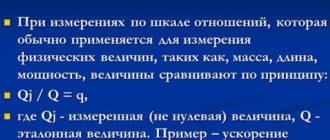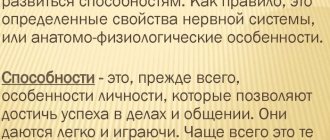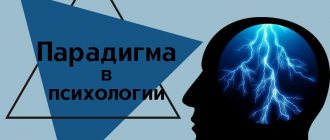Essence and features
There are several options for describing this definition:
- A formalized way of processing graphic or text information. Characteristics: systematic, strict.
- A qualitative and quantitative method of studying texts that allows us to identify trends and facts that are reflected in the analyzed documents.
When applying this technique, routine document analysis cannot be canceled. Both of these methods should complement each other and be combined with each other. Only when they are combined can you understand the meaning of the written text.
Essence of the method:
- This technique can be used as a leading one, but it is better to use it in combination with other methods of obtaining information.
- The study of documents and literary texts should be carried out in their social context.
- Units of text need to be recorded.
Content analysis is used to research and study:
- Social and psychological phenomena that are reflected in the content of messages.
- Features of people who create texts, documents, fiction.
- Social and psychological aspects of the author’s influence on the public.
The technique allows you to clarify, process and transform information that was obtained during conversations, interviews, and open-ended questions from questionnaires.
The researcher needs to identify units of text content and distribute the information received into separate groups according to predetermined criteria.
Before you start using content analysis, you need to understand when it is effective:
- If the language factor plays a decisive role in obtaining the necessary information. For example, this is relevant for searching for authors of foreign texts, establishing the authorship of texts by famous writers and composers.
- When there is no direct access to the author of the text. If the author is inaccessible, only the information presented in his works can be analyzed.
- If you need to process a large amount of information. Similar problems are faced by people who work in the media, cinema, and study literature. For example, it is impossible to characterize the situation in the world by reading information on two sites without touching on the array of data among a large number of sources.
Media use
This method is an extremely beneficial tool for studying a particular media object.
Media text often contains hidden symbolic forms of communication with the audience, and the researcher’s task is to transform these forms into statistical objective data.
Content analysis is an extremely productive method of studying both your own sources and the sources of competitors. It allows you to identify the most successful moves that competitors are using and implement them into your system.
With its help, you can track patterns and trends in the information flow, identify the explicit and hidden intentions of the communicator, and predict the possible reaction of the audience.
Sometimes it is necessary to analyze your materials and identify those aspects that make it difficult for the consumer to perceive an idea, see what semantic messages the audience responds to well, begins, for example, to follow links more actively, sales begin to grow, etc.; and which ones he reacts to neutrally or even negatively.
User comments will also help us with this.
History of the study
In psychology, the method of subjective content analysis began to be used in the 30s of the 20th century in the social sciences. The first areas that began to test this technique were journalism and literary criticism. The procedures that this method includes were founded by American sociologists - B. Berelson, H. Lasswell.
Scientists tested the methodology in the field of politics and propaganda, and were able to modernize it and adapt it to various spheres of human activity.
The frequency of application of content analytical methods has increased during the development of mass media. When B. Berelson summarized the data obtained in a book, the technique began to be used in scientific fields outside of psychology.
Simultaneously with the development of content analysis in America, it began to gain popularity in the USSR. Scientist N.A. Rybnikov contributed to the development of the Soviet approach to the development of this technique.
He specialized in the study of biographical data. He used the content analysis method to study personalities based on their autobiographies.
Initially, Rybnikov began studying the works of workers' children. He invited them to describe life, positive and negative moments, and reveal their experiences.
Thus, the scientist was able to determine which positive and negative aspects of life prevail in children, depending on age. He made an interesting conclusion - at an early age, girls have a more positive outlook on life than boys. As they grow older, they are more inclined to negative thoughts and experiences.
The next scientist who continued to use content analysis and develop this direction was P. P. Blonsky. He was only interested in people's primary memories. He recruited subjects from the education sector. These were teachers, professors, students, schoolchildren.
After conducting research, the scientist was able to prove that for most people, primary memories are associated with fears or difficult experiences.
List of used literature
1. Averyanov L. Sociology: the art of asking questions. - M., 1998.
2. Batygin G.S. Lectures on the methodology of sociological research. - M.: Aspect Press, 1995.
3. Devyatko I.F. Methods of sociological research. -Ekaterinburg, 1998.
4. Methods of collecting information in sociological research. Book 1.2 / Rep. ed. V.G. Andreenkov, O.M. Maslova. - M.: Nauka, 1990.
5. Noel E. Mass surveys. Introduction to demoscopic techniques. - M.: Ava-Estra, 1993.
6. Fundamentals of applied sociology / Ed. M. Gorshkova, F. Sheregi. - M.: Interfax, 1996.
7. Sadman S., Bradburn N. How to ask questions correctly. - M.: Institute of the Public Opinion Foundation, 2002.
8. Tatarova G. G. Methodology of data analysis in sociology. - M.: Strategy, 1998.
9. Tolstova Yu.N. Measurement in sociology. - M.: Infra-M, 1998.
10. Yadov V.A. Strategy of sociological research: description, explanation, understanding of social reality. - M.: Dobrosvet, 2003.
1. Posted on www.
Examples of similar educational works
Methods of psychological and pedagogical research; Theoretical research methods
... research of one object by representatives of different sciences. 2. To the empirical: • observational methods (observation and self-observation); • experiment (laboratory, field, natural, etc.); • psychodiagnostic method; • process analysis…
History of content analysis as a psychodiagnostic procedure - psychodiagnostics
...many other topics. content analysis text psychological 1. Basic terms of the concept of content analysis Content analysis in psychology (English contents - content) is a scientific method of identifying and assessing certain characteristics of texts and other media...
7. Experimental and correlational approaches to socio-psychological research. ...
…causality is not discussed. A correlational study is a study conducted to confirm or refute a hypothesis about ... and there is no independent variable at all. In such a “study” there is no material for comparison. A …
Topic: “Content analysis”
...with each other or units of analysis to categories. CODING MATRIX – is a table for recording the primary results of the study. Introduction Purpose of the work: mastering the method of content analytical research. Content analysis is...
Varieties and methodologies
Types of content analysis in psychology:
- Non-quantitative. It is based on a non-frequency model of text content.
- Quantitative. Involves the use of mathematical and statistical procedures. When researching, scientists take into account the style of speech, semantic blocks, and words.
Psychological science identifies 4 content analysis methodologies:
- Sociological or semantic. This is carried out with the help of expert assessments of the content.
- Linguistic or grammatical. It is determined by the length of phrases, the size of paragraphs, the order of words that make up the sentence, and metric composition.
- Situational. Processing, transformation of bibliographic references and scientific literature.
- Cybernetic or documentary. Determined by text density, language parameters, flow, aspect ratio, information volume, capacity, information content.
An example of content analysis of advertising. Contextual advertising analysis
Competition in Yandex.Direct and Google Ads contextual advertising is sometimes intense, so it is important to know about the keywords used and the quality of competitors’ advertisements. This analysis will help identify:
what calls to action do competitors use and what they focus on in their ads;
Do they use additional extensions to work with contextual advertising?
what ideas you can borrow and remake for yourself;
What are the approximate costs of competitors for advertising?
Here are several programs and services that will help you conduct your research:
DirectEditor is a program for editing and analyzing Yandex.Direct advertising campaigns. The “Competitors” function deserves special attention, with which you can analyze competitors in Yandex.Direct for all keywords of the selected level. The data is also supplemented by a forecast of the cost of the contextual advertising budget from Yandex.Direct, taking into account real positions.
SpyWord – analyzes the quantity and quality of competitor keywords. To do this, you need to enter a competitor's domain or keyword.
The Yandex.Direct budget forecast allows you not only to estimate future advertising costs, but also to view competitors’ advertisements based on the keywords you entered:
Serpstat is a multifunctional SEO platform. In the “Keyword Analysis” section, you can see which pages are receiving traffic from the context and how many ads are configured for a specific page.
Advantages and disadvantages
With this method:
- You can see hidden patterns and trends.
- The behavior of the subject cannot be disrupted by the researcher.
- It turns out to identify reliable indicators, which are often extremely difficult to distinguish in a massive amount of information.
- It is possible to obtain reliable results.
With the help of content analysis, it is possible to reveal the psychological characteristics of the author, the communicator, and the current audience, and determine the connection between them. The technique allows you to see the connection between the written text and the reality that surrounded the author at the time of its writing and draw conclusions.
This is a labor-intensive method. To understand what kind of reality surrounded the author and his readers during the period of writing and submitting the text, you need to study each person individually, his:
- environment;
- social status;
- geographical position;
- the situation in the country;
- mental and physical state.
To do this, you need to collect a lot of information.
Procedures
Psychologists identify several content analysis procedures. To use this technique, you need to carefully study the features of the study.
Identification of semantic units
To identify a semantic unit, you need to know what they are:
- Facts, events.
- Documentary information about a person.
- The subtext of appeals that are sent to a potential addressee.
- Topics that are expressed in texts, videos, music.
The semantic units of content analysis are assigned before conducting the research. They may vary depending on the goals, content, hypotheses, and tasks.
Identifying units of account
Units of analysis and units of counting may be the same or different. They depend on the purpose of the study being conducted. If they do not match, then the psychologist identifies his own units of calculation, the most popular of which are:
- Meters of video or audio recording.
- Duration of the TV show.
- Number of lines in the text.
- Number of pages, individual words.
- The number of images related to the subject of the text.
Count
To calculate the results, you need to put forward criteria by which the information will be divided into separate groups. Computer programs, tables, and special formulas can be used for calculations.
Stages of applying content analysis
A necessary condition for applying the content analysis technique is the availability of a material carrier of information. In all cases where such media exists or can be recreated, the use of content analysis techniques is acceptable.
First stage
Determination of the set of sources studied
or messages using a set of specified criteria that each message must meet:
- specified type of source (press, television, radio, advertising or propaganda materials)
- one type of messages (articles, notes, posters);
- specified parties involved in the communication process (sender, recipient (recipient);
- comparable message size (minimum volume or length);
- frequency of messages;
- method of disseminating messages;
- place of distribution of messages;
- time of appearance of messages.
Other criteria can be used if necessary, but the ones listed above are the most common.
Second phase
Formation of a sample set of messages.
In some cases, it is possible to study the entire set of sources identified at the first stage, since the cases (messages) to be analyzed are often limited in number and are well accessible. However, sometimes content analysis must rely on a limited sample taken from a larger body of information.
Third stage
Identifying units of analysis.
They can be words or themes. The correct choice of units of analysis is an important component of the entire work. The simplest element of a message is a word. A topic is another unit that is a separate statement about a subject. There are quite clear requirements for choosing a possible unit of analysis:
- it must be large enough to convey meaning;
- it should be small enough not to express many meanings;
- it must be easily identifiable;
- the number of units must be so large that a sample can be taken from them.
If a topic is chosen as the unit of analysis, then it is also distinguished in accordance with certain rules:
- The topic cannot extend beyond the paragraph.
- A new topic arises if there is a change: the perceiver,
- acting
- goals,
- categories.
There are also special methods of content analysis, adapted to the needs of historical and historical-philosophical research.
Fourth stage
Allocation of units of account
, which may coincide with semantic units or be of a specific nature. In the first case, the analysis procedure comes down to counting the frequency of mention of the selected semantic unit; in the second, the researcher, based on the analyzed material and the goals of the study, himself puts forward units of counting, which can be:
- physical extent of texts;
- text area filled with semantic units;
- number of lines (paragraphs, characters, columns of text);
- duration of broadcast on radio or TV;
- footage of film for audio and video recordings,
- number of drawings with a certain content, plot, etc.
In some cases, researchers use other counting elements. Of fundamental importance at this stage of content analysis is the strict definition of its operators.
Fifth stage
Direct calculation procedure
. In general, it is similar to standard methods of classification into selected groups. The compilation of special tables, the use of computer programs, special formulas, and statistical calculations are used.
Typically tables like this are compiled:
| Units of Analysis | Units of Analysis | Units of account | Units of account |
| Categories | Subcategories | Frequency of mention absolute, times | Relative frequency of mention, % |
| 1 Category | 01 subcategory | 15 | 32 |
| 02 subcategory | 7 | 15 | |
| 03 subcategory | 25 | 53 | |
| Total: | 47 | 100 |
Sixth stage
Interpretation of the results obtained
in accordance with the goals and objectives of a particular study. Usually at this stage, such characteristics of the text material are identified and evaluated that allow one to draw conclusions about what the author wanted to emphasize or hide. It is possible to identify the percentage of prevalence in society of subjective meanings of an object or phenomenon.








